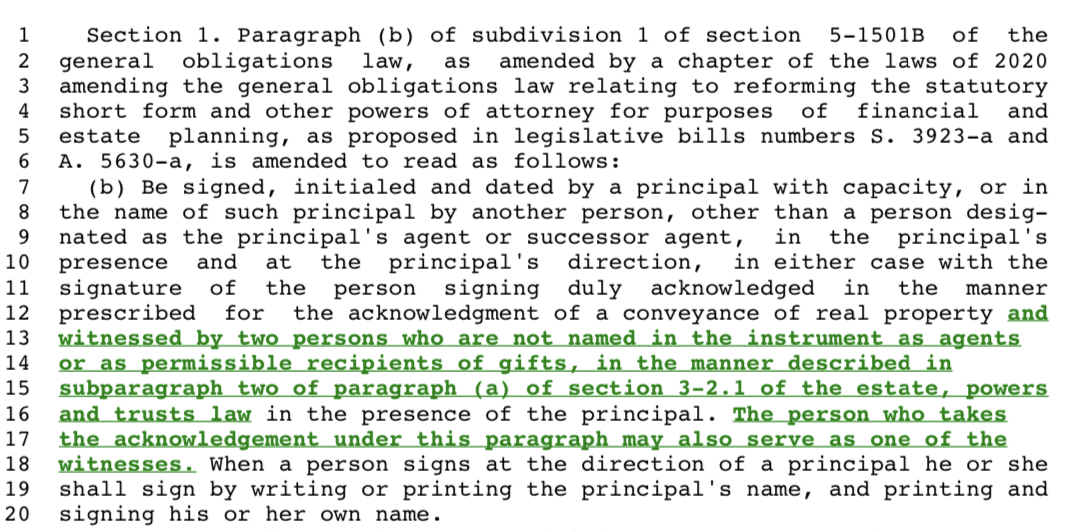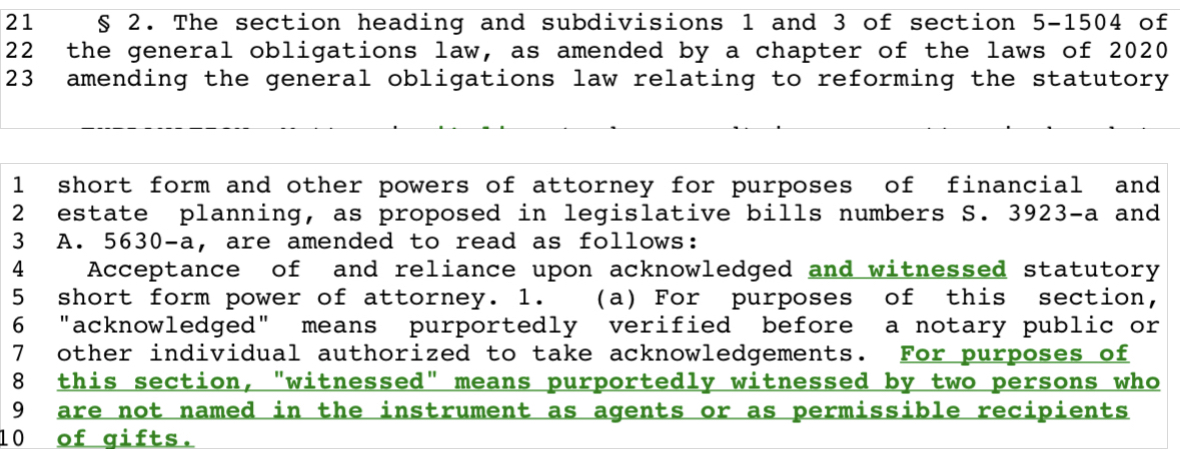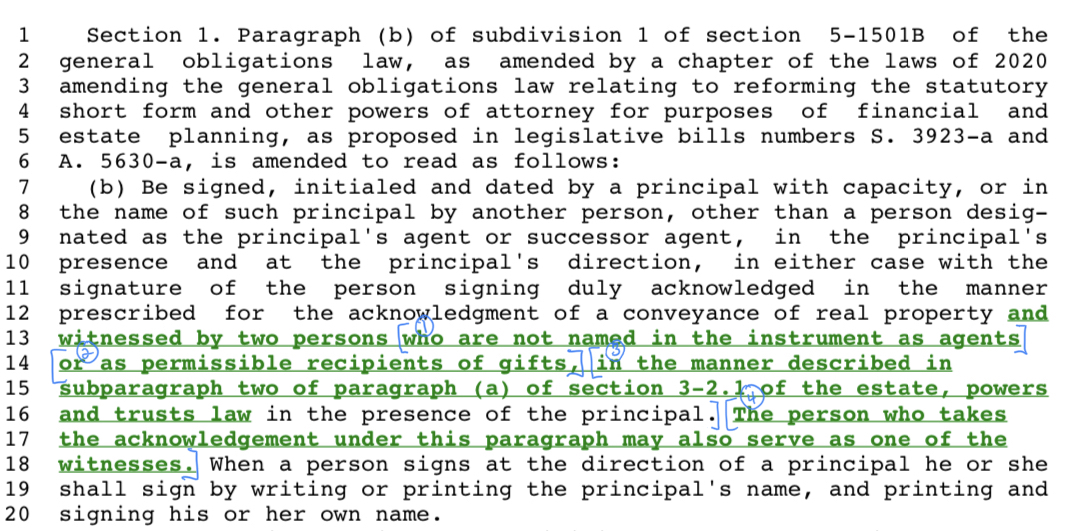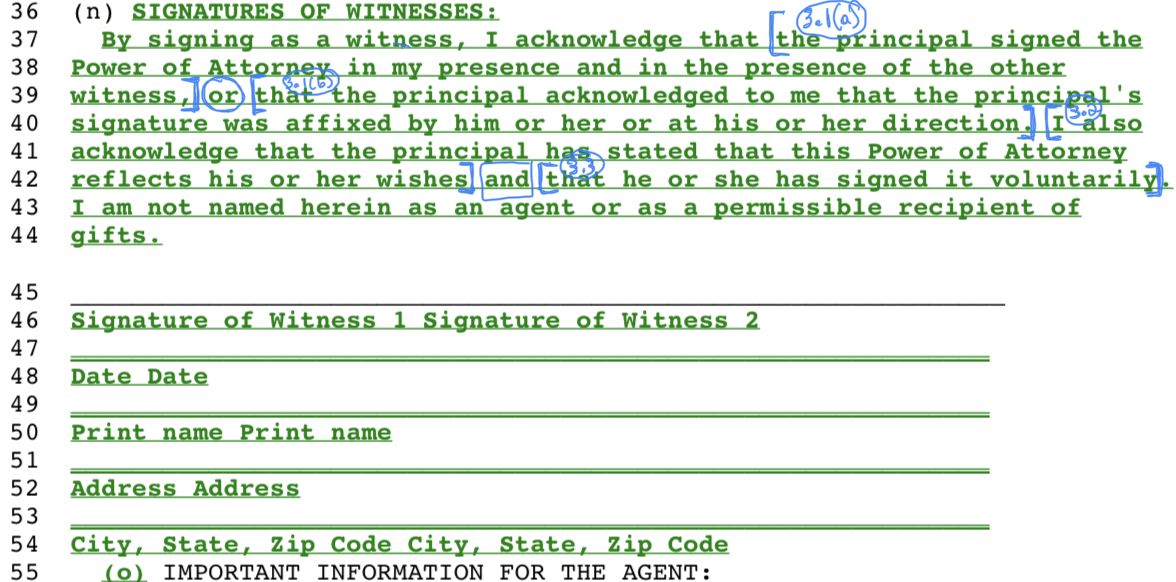New NY Power of Attorney Needs Two Witnesses
On June 13, 2021, New York’s new statutory short form power of attorney became effective. It now requires two witnesses. NY General Obligations Law § 5-1501(b).
The requirement for two witnesses was not in the law that Gov. Cuomo signed on December 15, 2020 (Senate Bill S3923A). The two-witnesses requirement was added by Senate Bill S888, which Gov. Cuomo signed or March 25, 2021. It is the result of “a negotiated change.”
As the summary of S888 states (in part), “This legislation amends the underlying chapter by adding a requirement that two disinterested witnesses sign the power of attorney form.” The stated justification for this and other changes is as follows (with emphasis added by me): “This legislation is a negotiated change to the underlying chapter to provide additional protections against fraud and abuse for the principal signing a power of attorney form.”
New Requirement: Two Witnesses
The new two-witnesses rule is found in three sections of New York General Obligations Law.
(1) GOL § 5-1501B provides the requirements for creating a valid power of attorney. Section 1 of S888 amends GOL § 5-1501B(1)(b) to require two witnesses:

(2) GOL § 5-1504 has rules on the acceptance of a statutory short form power of attorney by third parties. Section 2 of S888 amends GOL § 5-1501(1)(a) to reflect the two-witness requirement:

(3) GOL § 5-1513 sets forth the statutory short form power of attorney. Section 3 of S888 added a new clause in the form, “Signatures of Witnesses”:

Other New Rules for the Two Witnesses
GOL § 5-1501B(1)(b), as amended by S888, sets forth four rules for the two witnesses:

(1) Not named agent: The witnesses must not be an agent named in the power of attorney document.
(2) Not named gift recipient: The witnesses must not be named in the document as someone who can receive a gift.
(3) Manner of signing: The witnesses must sign in the manner prescribed by EPTL 3-2.1 in the presence of the principal. Section (n) of the revised statutory short form helps with this rule:

The manner of signing has three requirements:
(3.1) (a) The principal must sign in the presence of both witnesses, or (b) the principal can sign the power of attorney outside of the presence of one or both witnesses and later acknowledge to the signing-witness that the principal signed the document himself or herself (or had the document signed by someone else at the principal’s direction).
(3.2) The principal must state that the power of attorney reflects the principal’s wishes.
(3.3) The principal must state that the principal signed the power of attorney voluntarily.
(4) Notary can be witness: The last rule regarding the two-witnesses permits the notary to also be one of the two witnesses.